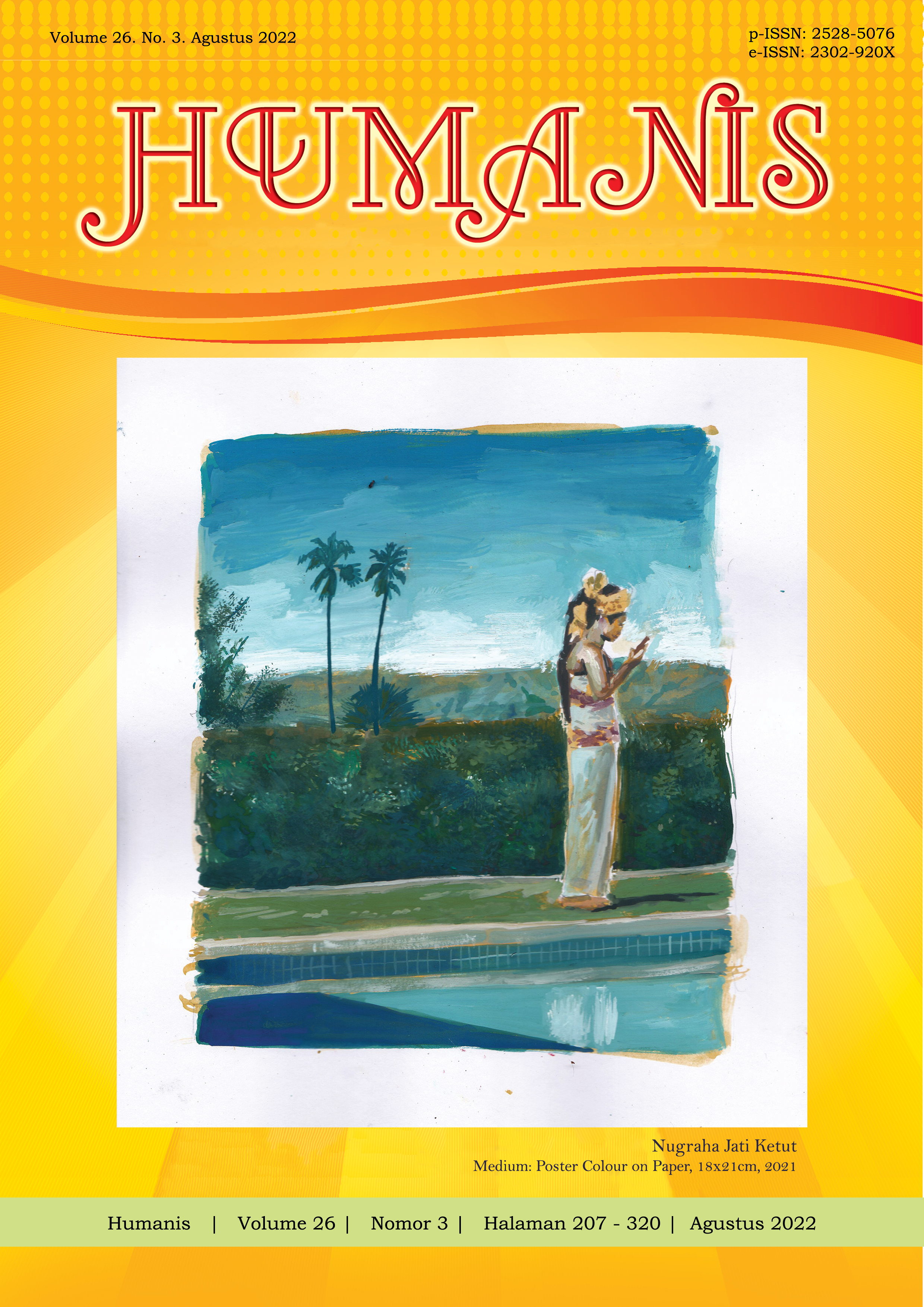Beauty Care Kebutuhan Kultural Perempuan Metropolitan
Abstract
This paper discusses the cultural phenomenon of urban women in the modern era that gives rise to a lifestyle in an effort to maintain health. The lives of women in urban areas have a need to take care of skin health. One way to treat it is to buy beauty care products or skincare. The behavior that appears with a variety of beauty and skincare products makes it a cultural necessity. The emergence of dependence on beauty clinics and various beauty products cannot be separated from the identity of women in urban areas. This paper is based on the results of a qualitative research method with a phenomenological approach. Based on key informants the knowledge and needs of skin health are influenced by the media and popular culture. The need for skin health through skincare products affects the beauty standards of modern women in urban areas.
Downloads
References
Dewi, S., Damayanti, I., Fitri, M., & Ugelta, S. (2018). Pengembangan Media Video Latihan Olahraga Kesehatan Bagi Masyarakat Umum Berbasis Web. Jurnal Terapan Ilmu Keolahragaan, 3(1), 40. https://doi.org/10.17509/jtikor.v3i1.8796
Dwiyanto, D. (2002). Metode Kualitatif: Penerapannya dalam Penelitian. Diakses Dari: Https://Www. Academia. Edu/Download …, 0, 1–7.
Harlim, A. (2017). Buku Ajar Ilmu Kesehatan Kulit dan Kelamin Dasar Diagnosis Dermatologi (1st ed.). FK UKI.
Irwan. (2017). Etika dan Perilaku Kesehatan. CV. ABSOLUTE MEDIA.
Jatmika, septian emma dwi, Maulana, M., Kuntoro, & Martini, S. (2019). Pengembangan Media Promosi Kesehatan. In Buku Ajar.
Kulbok, P. A., & Cox, C. L. (2002). Dimensions of adolescent health behavior. Journal of Adolescent Health, 31(5), 394–400. https://doi.org/10.1016/S1054-139X(02)00422-6
Markplus.inc. (2020). ZAP Beauty Index 2020 | 1. ZAP Beauty, 1–36.
Mayasari, D. (2020). Arti Promotif, Preventif, Kuratif, dan Rehabilitatif dalam Dunia Kesehatan. TimesIndonesia,Jakarta.
Moleong, L. J. (2014). Metodologi penelitian kualitatif. PT Remaja Rosdakarya.
Putri, N. R. (2020). Hubungan Antara Kepuasan Pelanggan Dengan Word Of Mouth Pada Pelanggan Klinik Kecantikan London Beauty Centre. Bab I, 1–16.
Rahmalia, N. (2018). Pengertian Kulit Bab 1. Sirapanji 2014, 1–49.
Sakdiyah, E. H. (2013). Dimensi Perilaku Promosi Kesehatan Remaja Berdasarkan Perbedaan Jenis Kelamin.
Psikoislamika : Jurnal Psikologi Dan Psikologi Islam, 10(1), 15–28. https://doi.org/10.18860/psi.v10i1.6358
Sianturi, A. H. (2018). Pelaksanaan program promotif dan preventif di puskesmas Labuhan Bilik Kabupaten
Labuhanbatu tahun 2018. Analisis Kesadahan Total Dan Alkalinitas Pada Air Bersih Sumur Bor Dengan Metode Titrimetri Di PT Sucofindo Daerah Provinsi Sumatera Utara, 44–48.
Storey, J. (2008). Culture Studies dan Kajian Budaya Pop. Jalasutra.
Syardi, M. (2017). RI Bidik Peluang Besar Industri Kecantikan. 13 Agustus.
Utomo, K. P. (2017). asal muasal standar kecantikan. 1 Agustus.
Vespa, F. (2008). Pendekatan Fenomenologi: Pengantar Praktik Penelitian dalam Ilmu Sosial Related papers. Mediator, 9(1), 116.
Wiasti, N. M. (2012). Redefinisi Kecantikan Dalam Meningkatkan Produktivitas Kerja Perempuan Bali, Di Kota Denpasar. Piramida, 6(2), 1–22.
Wibowo, N., & Pandu, A. (2013). Perancangan Interior Klinik Kecantikan Berbasis Eco-Design di Surabaya. Jurnal Intra, 1(2), 1–8.
Zed, M. (2014). Metode penelitian kepustakaan. Yayasan Obor Indonesia.


















